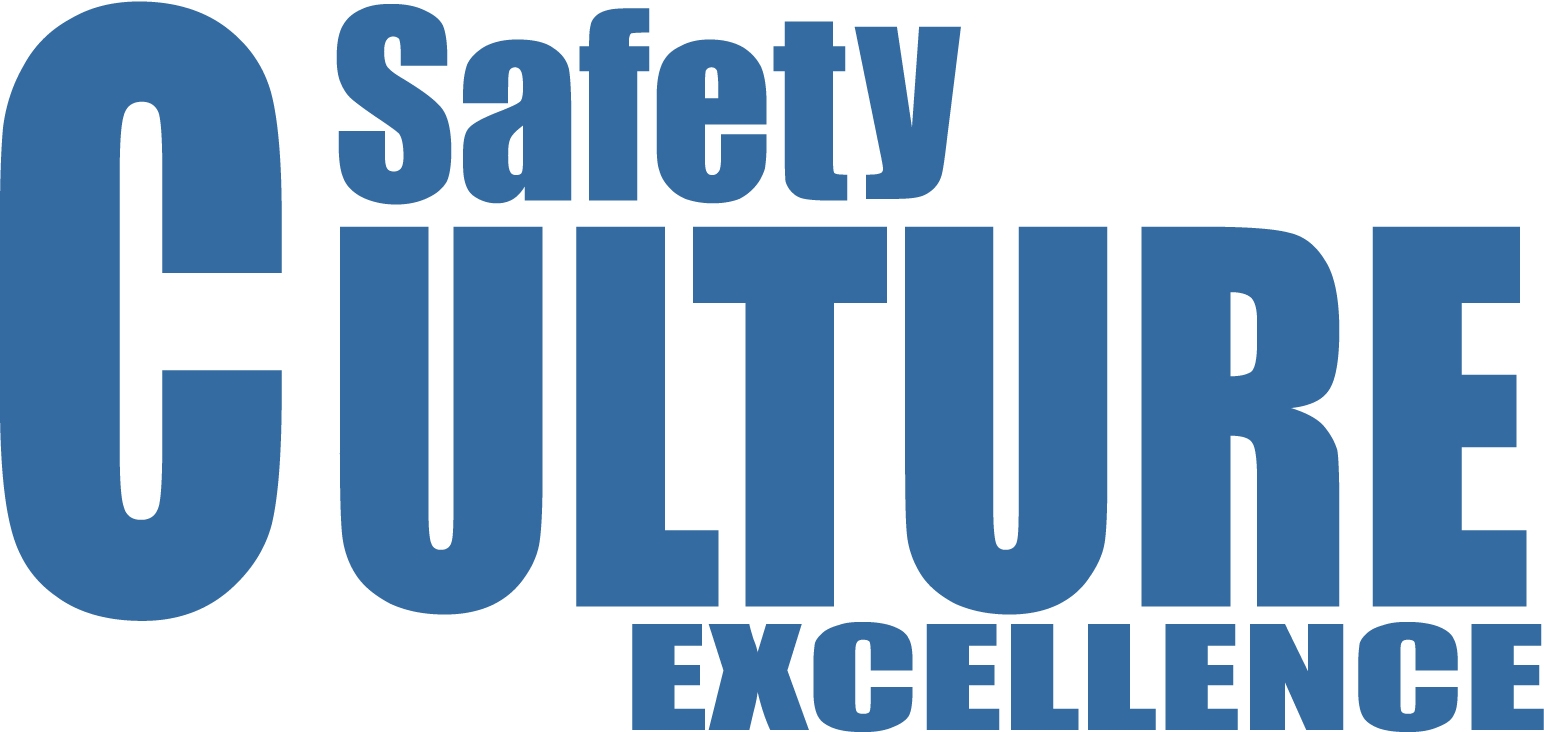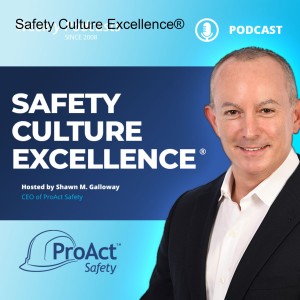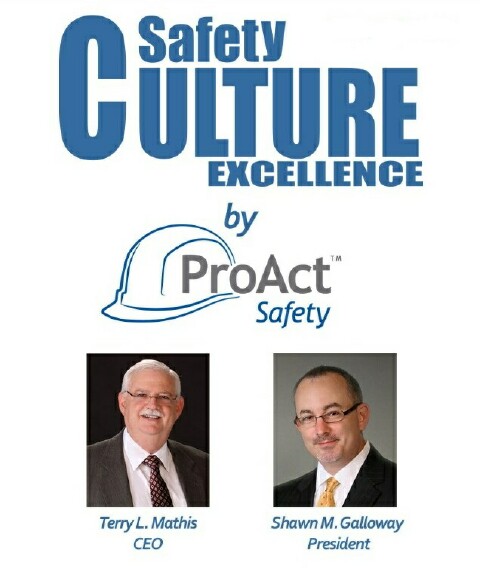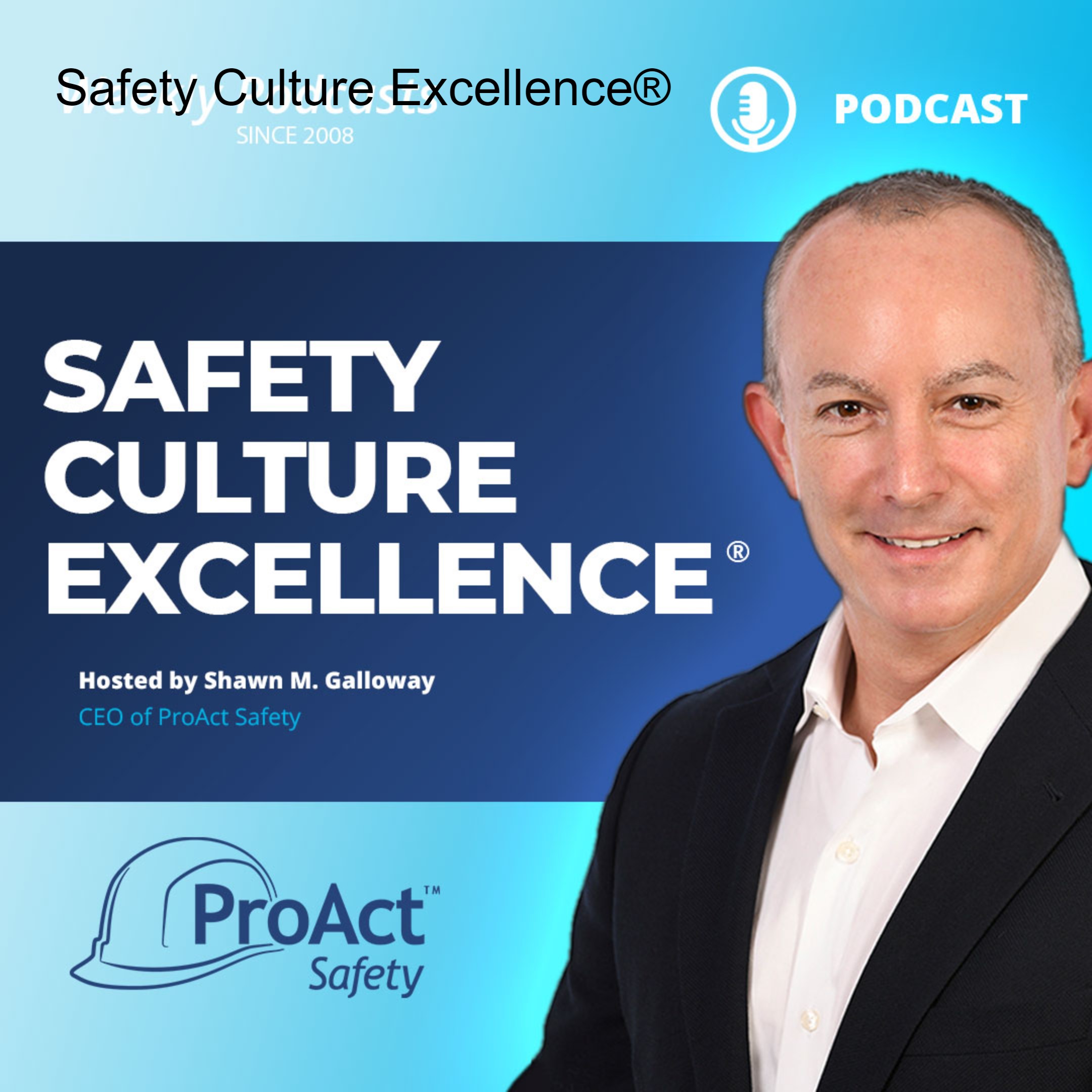Episodes

Tuesday Feb 04, 2014
When Leaders Don’t Lead, Followers Won’t Follow
Tuesday Feb 04, 2014
Tuesday Feb 04, 2014
Insightful conversation from dinner the other night. I was performing a safety culture assessment of an organization in the oil & gas business. While at a restaurant, a man at the next table asked me who I worked for as we were dressed alike. (I was wearing flame-resistant clothing due to the hazardous locations of the field interviews.) Me: “ProAct Safety and you?” Him: Not immediately answering but offering, “Safety’s a bunch of BS.” Me: “I’m... sorry to hear that, what line of work are you in?” Him: “I’m a Superintendent for…” (A known oilfield company, also a Superintendent is often the top local boss on construction and many oilfield projects.)
Me: “Oh yea, okay. So how did y’all do in safety last year?” Him: “Well our rate was …” (It was quite poor). Me: “That’s quite unfortunate, why do you think that is?” Him: “Who knows, probably if our leadership had a better attitude towards it.” Me: “So you are a Superintendent?” Him: “Yea.” Me, with an unfiltered response: “If you believe safety is a bunch of BS, what message do you think that sends to the guys you lead?” His facial expression was the only response I received.
Leaders must remember what they believe will influence their decisions and eventually be observable in their behaviors. If the leaders don’t lead with the desirable beliefs and behaviors, don’t expect the followers to follow. His unfortunate attitude (and possibly those of other leaders if he was correct) might not be the only contribution to their poor performance, but it is certainly a good place to start.
- Shawn M. Galloway
Shawn M. Galloway is the President of ProAct Safety and the coauthor of two books, his latest published Feb 2013 by Wiley is STEPS to Safety Culture Excellence. As an internationally recognized safety excellence expert, he has helped hundreds of organizations within every major industry to achieve and sustain excellence in performance and culture. He has been listed in this year’s National Safety Council Top 40 Rising Stars, EHS Today Magazine’s 50 People Who Most Influenced EHS and ISHN Magazine’s POWER 101 – Leaders of the EHS World and again in the recent, elite list of Up and Coming Thought Leaders. In addition to the books, Shawn has authored over 300 podcasts, 100 articles and 80 videos on the subject of safety excellence in culture and performance.

Wednesday Jan 29, 2014
Coaching Safety: Performance vs. Improvement
Wednesday Jan 29, 2014
Wednesday Jan 29, 2014
The most ineffective safety coaching I have ever seen had some great ideas and techniques, but it was based on a bad premise. That premise was that supervisors and leaders should coach the day-to-day performance of their workers in an evaluative manner. They used some powerful interaction models and evaluative techniques, but in the end, it just seemed like the boss’s opinion vs. the worker’s opinion of performance.
The best safety coaching is based on targeted improvements rather than evaluation. Targeting specific improvements (precautions to take or behaviors that contribute to culture) helps coaching in several ways:
- It creates talking points that are friendly and logical (what we agreed to work on) and not subjective (what the boss does or doesn’t like)
- It creates a clear dichotomy of performance (you either took the targeted precaution or you did not) vs. the boss thinks you did well or poorly
- When targeted precautions are not taken, it fosters a discussion of why and why not rather than a judgment of performance
- It creates a communication atmosphere of adult talking to adult vs. adult overseeing child
- It creates the expectation that safety is about getting better not just staying the same
Safety coaching can be an effective tool for supervisors and leaders when done in this way. When organizations learn how to improve safety, it is an easy and logical step to apply targeted-improvement coaching to other performance issues as well.
-Terry L. Mathis
Terry L. Mathis is the founder and CEO of ProAct Safety, an international safety and performance excellence firm. He is known for his dynamic presentations in the fields of behavioral and cultural safety, leadership, and operational performance, and is a regular speaker at ASSE, NSC, and numerous company and industry conferences. EHS Today listed Terry as a Safety Guru in ‘The 50 People Who Most Influenced EHS in 2010, 2011 and 2012-2013. He has been a frequent contributor to industry magazines for over 15 years and is the coauthor of STEPS to Safety Culture Excellence, 2013, WILEY.


Wednesday Jan 22, 2014
The Org. Chart of Safety
Wednesday Jan 22, 2014
Wednesday Jan 22, 2014
What message does it send where safety is placed in an organizational chart? In some organizations, especially small ones, it may not be significantly consequential. In others, it can be extremely critical. The differences in organizational culture can both dictate where safety should be and suggest where it should not be.
In one of our client organizations, safety, quality assurance and training were all placed under the control of the Vice President of Human Resources. Every individual who had served in that position had come from one of those three backgrounds and was an expert at that one and a complete amateur at the other two. Three VPs in a row were weak in safety and the results emphasized that fact. Two of the “non-safety” VPs had also appointed one of their former associates who also knew little or nothing about safety to head the safety department. We have found similar weaknesses in almost all organizations who do not have dedicated safety professionals at the highest levels or have the president or CEO lead safety personally.
Another client organization had worked diligently to build trust between safety professionals and the represented workforce. They had a history of overusing discipline prior to this effort and were just beginning to overcome it when a senior leader reorganized the senior management group and put safety under the corporate counsel. The immediate perception of the workforce was that the organization was moving back to their old stance on discipline and lining up a lawyer to head the effort. The workers and their union leaders protested.
These are just two examples of how the placement of safety in the org. chart can impact its effectiveness. Unfortunately, there is no magic answer to where it should be for all organizations. An important principle is that safety should be strategically led by organizational leaders and safety specialists should carry out the strategic plan. When safety is delegated to non-safety or multifunctional leaders, it seldom produces excellent performance.
-Terry L. Mathis
Terry L. Mathis is the founder and CEO of ProAct Safety, an international safety and performance excellence firm. He is known for his dynamic presentations in the fields of behavioral and cultural safety, leadership, and operational performance, and is a regular speaker at ASSE, NSC, and numerous company and industry conferences. EHS Today listed Terry as a Safety Guru in ‘The 50 People Who Most Influenced EHS in 2010, 2011 and 2012-2013. He has been a frequent contributor to industry magazines for over 15 years and is the coauthor of STEPS to Safety Culture Excellence, 2013, WILEY.

Wednesday Jan 15, 2014
The Danger of Relying on Awareness
Wednesday Jan 15, 2014
Wednesday Jan 15, 2014
Awareness is an important part of safety, but it is not the only part. Awareness is simply a step in the right direction that produces nothing without the other steps. Further, there are also two types of safety awareness: awareness of risks and awareness of how to manage those risks. So, when people say that safety is all about awareness, they are missing the big picture.
Consider the following illustration: Two people are traveling in a car and one is aware of the need for seat belts and the other is not. Neither of them buckle their seat belts. They have a head-on collision. Which person hits the windshield hardest, the person who is aware or the person who is not?
The true definition of safety includes two types of awareness and one type of action. Awareness of risks is first. In business we call this risk assessment. Awareness of the ways to address and reduce the risks is second and we call these mitigation and precautions. The third step is the action step. Awareness does not improve safety unless it results in action.
Leaders must mitigate risks where possible. Workers must take precautions where risks still exist. Failure to be aware results in inaction. But inaction can occur even with awareness and can render awareness inadequate to prevent accidents.
-Terry L. Mathis
Terry L. Mathis is the founder and CEO of ProAct Safety, an international safety and performance excellence firm. He is known for his dynamic presentations in the fields of behavioral and cultural safety, leadership, and operational performance, and is a regular speaker at ASSE, NSC, and numerous company and industry conferences. EHS Today listed Terry as a Safety Guru in ‘The 50 People Who Most Influenced EHS in 2010, 2011 and 2012-2013. He has been a frequent contributor to industry magazines for over 15 years and is the coauthor of STEPS to Safety Culture Excellence, 2013, WILEY.

Wednesday Jan 08, 2014
Promoting Safety: When to Talk and When to Shut Up
Wednesday Jan 08, 2014
Wednesday Jan 08, 2014
There is an old saying that “Talk is cheap because supply is greater than demand.” In safety, we find that leaders all too often talk and don’t talk at exactly the wrong times. So what are the right and wrong times to talk about safety?
Wrong Time to Talk: When you don't plan on taking action. Talking about safety issues when no action is being taken damages credibility about as much as anything leaders can do. Have you ever heard a whole work force say “They don’t put their money where their mouth is!”? When talk is not paired with action, there isn’t much to talk about except future plans, and that conversation will set a future trap for leaders if they fail to follow through.
The second worst time to talk is when leaders urge workers to improve safety but have no solid plan for doing so. Saying the awful generalizations like “be careful” and “think before you act” are insulting and meaningless.
Right Time to Talk: When leaders have invested either money, resources or time in safety and have made a difference, it is time to make sure everyone knows. This should not be boasting or grabbing credit, but simply stating that the organization has addressed a safety issue. Failing to let the workers know about significant progress or effort, perpetuates the perception that talk doesn’t match action. It can also ambush workers with unexpected changes in their work place.
Leaders can also set specific behavioral targets and create true talking points. While the tired approaches of preaching generic safety to the troops are often counterproductive, setting improvement goals and defining individual roles and responsibilities in achieving them can truly rally people to meaningful action.
The best safety leaders have learned when to talk and when to shut up.
-Terry L. Mathis
Terry L. Mathis is the founder and CEO of ProAct Safety, an international safety and performance excellence firm. He is known for his dynamic presentations in the fields of behavioral and cultural safety, leadership, and operational performance, and is a regular speaker at ASSE, NSC, and numerous company and industry conferences. EHS Today listed Terry as a Safety Guru in ‘The 50 People Who Most Influenced EHS in 2010, 2011 and 2012-2013. He has been a frequent contributor to industry magazines for over 15 years and is the coauthor of STEPS to Safety Culture Excellence, 2013, WILEY.

Wednesday Jan 01, 2014
Consistency vs. Continuity: Can Either or Both Improve Performance?
Wednesday Jan 01, 2014
Wednesday Jan 01, 2014
Ralph Waldo Emerson commented that “A foolish consistency is the hobgoblin of little minds…” To an extent, every manager and leader has some of this “littleness” of mind. Almost all long for people and process to be more consistent and predictable. If they were more consistent, changes and improvements could be accomplished uniformly across the organization. Sameness smacks of control and what leader doesn’t want to be in control? But the extreme side of consistency is robotic sameness. It contains no original thought, nor creativity. It has no motivation to go above and beyond. It does not question the status quo, nor long for excellence.
Continuity, in its best form, is enough consistency to allow for aligned effort but not stifle it. Continuity of strategy, programs, and terminology allow for individuals to work together toward a common cause with likeness of mind but room for individuality. People can seek the same goals, use the same tools and speak the same language, but do so in their own completely unique way. Each contribution can add up to a much greater sum with such synergy of effort.
So leaders, here is the challenge: Can you lead without micromanaging, align without stifling, create focus without destroying individuality. In short, can you build continuity without going too far and creating little-minded consistency?
-Terry L. Mathis
Terry L. Mathis is the founder and CEO of ProAct Safety, an international safety and performance excellence firm. He is known for his dynamic presentations in the fields of behavioral and cultural safety, leadership, and operational performance, and is a regular speaker at ASSE, NSC, and numerous company and industry conferences. EHS Today listed Terry as a Safety Guru in ‘The 50 People Who Most Influenced EHS in 2010, 2011 and 2012-2013. He has been a frequent contributor to industry magazines for over 15 years and is the coauthor of STEPS to Safety Culture Excellence, 2013, WILEY.

Wednesday Dec 25, 2013
Is This Really Safety Training: Checking for Understanding
Wednesday Dec 25, 2013
Wednesday Dec 25, 2013
There is an old saying, “I can explain it to you but I can’t understand it for you.” Like communication, training is a two-part process. Part one is delivering the training. Part two is learning what is being trained. In a perfect scenario, the trainer does the first part and the trainee does the second. In too many scenarios, the first part is attempted and the second part simply does not happen.
Much classroom training is simply delivered and evaluated. No learning is measured. Even in Computer-Based Training which includes testing, many of the lessons are repetitive and the answers can often be memorized without being understood. Most organizations feel pressured to deliver the quantity of training required and largely neglect the quality of the training. This has created a workforce of over-trained and underperforming workers in regards to safety. Much of our improved safety performance has resulted from worker experience rather than formal training programs.
The bottom line is that training is not really happening if learning is not taking place. Learning can be measured and verified both formally and informally through open questioning, role playing, or through testing. Every safety program should question whether they are just going through the training motions, or truly developing safety competence in their workers.
-Terry L. Mathis
Terry L. Mathis is the founder and CEO of ProAct Safety, an international safety and performance excellence firm. He is known for his dynamic presentations in the fields of behavioral and cultural safety, leadership, and operational performance, and is a regular speaker at ASSE, NSC, and numerous company and industry conferences. EHS Today listed Terry as a Safety Guru in ‘The 50 People Who Most Influenced EHS in 2010, 2011 and 2012-2013. He has been a frequent contributor to industry magazines for over 15 years and is the coauthor of STEPS to Safety Culture Excellence, 2013, WILEY.

Wednesday Dec 18, 2013
The Sky Is Falling: The Danger of Overkill Safety Rules
Wednesday Dec 18, 2013
Wednesday Dec 18, 2013
In the wide, open spaces with nothing overhead but sky and an occasional bird, a worker gets out of his truck and is required to put on his hard hat. There is a hundred yards between the gate and the factory door with no apparent dangers, but workers are required to put on all their PPE at the gate. Production workers must wear steel-toed boots so the company decides to make fork truck drivers wear them also.
What is the harm? You can’t be TOO safe after all, can you? The harm is in separating the rule from the risk.
Overkill rules (rules that strive for TOO safe) run the risk of causing workers to lose their respect for safety rules in general. If the rules don’t make sense, are they really about safety or just about authority? If leaders exert power over workers in ways that don’t add value, workers can lose respect for leaders as well as their rules. If safety rules don’t truly improve safety, they are not REALLY safety rules at all.
Overkill rules can also actually increase risks to workers. Wearing a hard hat in the hot sun may offer no protection from overhead risks and actually increase the probability of sunstroke or heat exhaustion. Wearing steel-toed boots can actually hamper fork truck operation in some instances. Suiting up at the gate may make the walk to the factory door awkward and more risky.
All safety rules should be periodically reviewed to ensure that they actually improve safety. Knee-jerk reactions to accidents are often the source of overkill rules and organizations should adopt a process of careful analysis to make sure any new rule or guideline actually addresses the risk involved and does not create new risks. When the rules make sense and reduce risks they are more often obeyed. The answer is “Yes, you can try to be TOO safe!”
-Terry L. Mathis
Terry L. Mathis is the founder and CEO of ProAct Safety, an international safety and performance excellence firm. He is known for his dynamic presentations in the fields of behavioral and cultural safety, leadership, and operational performance, and is a regular speaker at ASSE, NSC, and numerous company and industry conferences. EHS Today listed Terry as a Safety Guru in ‘The 50 People Who Most Influenced EHS in 2010, 2011 and 2012-2013. He has been a frequent contributor to industry magazines for over 15 years and is the coauthor of STEPS to Safety Culture Excellence, 2013, WILEY.

Wednesday Dec 11, 2013
Showing Up: Step One of Safety Leadership
Wednesday Dec 11, 2013
Wednesday Dec 11, 2013
We have been told that the first step of doing any job is showing up. This is equally true of the job of leading safety. Leaders who are noticeably absent lose opportunities to effectively lead. Obviously leaders cannot be everywhere every time; but they can pick and choose key opportunities to emphasize the importance of safety with their presence.
When tragedies happen and leaders don’t show up, what is the message sent to the troops? When major new safety initiatives begin without the in-person support of key leaders, how official and important are they. When organizations have safety teams or committees which oversee safety efforts, how do they proceed when leaders fail to attend?
The physical presence of leaders must be accompanied by their involvement and attention as well. A worker commented recently, “There was a serious safety incident and none of the leaders got mad.” He reflected that at his last job leaders showed emotions when safety efforts didn’t go well and caused heated discussions and decisive actions. In short, he equated emotion with caring. Leaders show they care when they show up and participate. What they do in their offices and the boardroom will not have the necessary impact if they are not present and engaged at key happenings in the workplace. Leaders, start with step one.
-Terry L. Mathis
Terry L. Mathis is the founder and CEO of ProAct Safety, an international safety and performance excellence firm. He is known for his dynamic presentations in the fields of behavioral and cultural safety, leadership, and operational performance, and is a regular speaker at ASSE, NSC, and numerous company and industry conferences. EHS Today listed Terry as a Safety Guru in ‘The 50 People Who Most Influenced EHS in 2010, 2011 and 2012-2013. He has been a frequent contributor to industry magazines for over 15 years and is the coauthor of STEPS to Safety Culture Excellence, 2013, WILEY.

Wednesday Dec 04, 2013
Injuries Aren’t the Only Kind of Accidents
Wednesday Dec 04, 2013
Wednesday Dec 04, 2013
When you think about the title of this piece, the first thing that comes to most people’s minds is an accident that produced property damage but no injuries. While that is a common example of this principle, it is not the only one. Virtually any undesired, unplanned, unexpected result of a work process is accidental. It could be argued that anything that did not turn out as planned is an accident.
When you think about it this way, people invest in the wrong stocks, elect the wrong people to office, and marry the wrong spouses from time to time. We don’t blame such accidents exclusively on the stock market, the government, or dating services. Likewise when an organization has a rash of injuries, it might not be exclusively the fault of the safety programs and specialists.
The real key to understanding and applying this principle is simply that good management must anticipate the multiple ways that processes can produce unwanted results and prevent them from doing so. When you think this way, safety is not a touchy, feely specialty to be delegated. It is a principle of good management.
Managers must constantly be on guard against the ways in which their processes can fail or go awry. Such events can be caused by people, machines, conditions, process flaws or combinations of these. Designing and constantly improving all the aspects of business processes is the job of leaders, managers and supervisors. Blaming workers or delegating problem areas seldom creates organizational excellence. It is crucial to remember that when the goose quits laying golden eggs, you need better goose management: not an egg specialists.
-Terry L. Mathis
Terry L. Mathis is the founder and CEO of ProAct Safety, an international safety and performance excellence firm. He is known for his dynamic presentations in the fields of behavioral and cultural safety, leadership, and operational performance, and is a regular speaker at ASSE, NSC, and numerous company and industry conferences. EHS Today listed Terry as a Safety Guru in ‘The 50 People Who Most Influenced EHS in 2010, 2011 and 2012-2013. He has been a frequent contributor to industry magazines for over 15 years and is the coauthor of STEPS to Safety Culture Excellence, 2013, WILEY.

